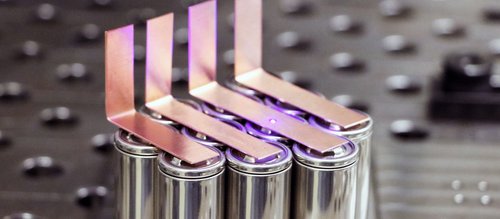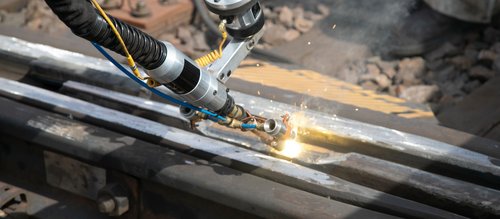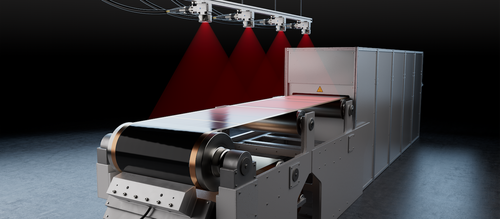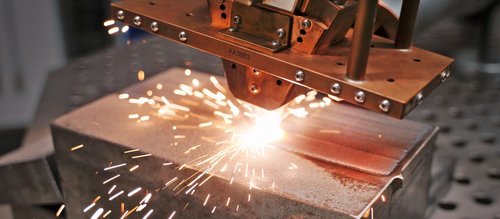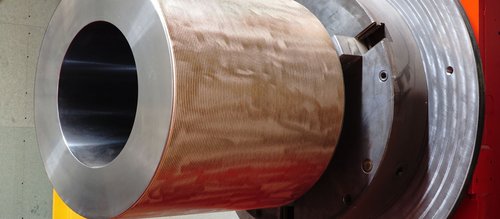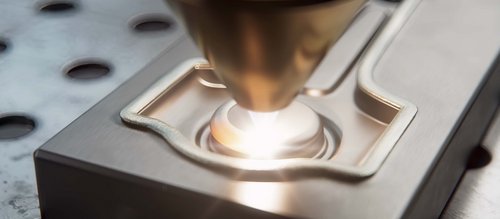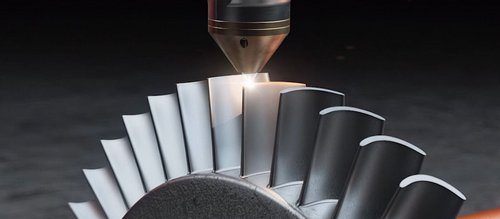
Joining Electrical Contacts in the Automotive Industry
Discover how blue diode lasers are transforming the automotive industry, offering unprecedented efficiency and flexibility.
Blue Diode Lasers Optimize the Welding of Smaller Auxiliary Motors or Power Electronics
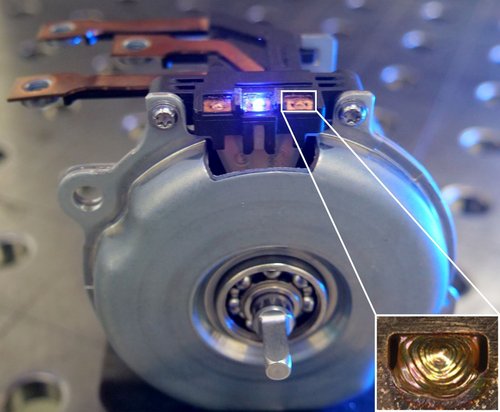
Laser welding has become an integral part of automotive production, but it is still rarely used for joining power electronics or auxiliary motors. However, blue diode lasers offer attractive process options for these applications.
Laser welding is a standard process in the automotive sector. Not only joining of the body-in-white, but also processes such as the welding of hairpins or stator/rotor sheet metal stacks are often implemented using this technology. However, it is less well known that the process is also suitable for joining contacts on smaller auxiliary motors - such as electric window regulators, seat adjusters, door locks and windshield wiper drives - or on power electronics between the battery and the traction motor. Reason enough to take a closer look at the advantages of this technology.
Diode Lasers: Economical, Flexible, Fast
As a contact-free joining process, laser welding does not cause any wear to the mechanical components, further it does not require the addition of filler materials, e.g. solder, or shielding gas. It is therefore easier to implement than other joining processes (TIG/MIG welding, resistance welding, brazing) and convinces with low operating costs. The technology also impresses during the welding process: welding the workpiece using a laser is uncomplicated and offers the greatest possible freedom when designing the weld seam geometry, making laser-based joining more flexible than other welding processes. In addition, the high-power density of the laser systems currently available enables very short process times: for conventional electrical contacts, the processing time is significantly less than 0.5 s. In combination with the concentrated heat input of the laser spot (diameter ≤ 0.6 mm), the thermal load on the components is minimized crucially.
Diode lasers have now proven themselves as a laser source in many industrial joining processes. The main advantage of this type of laser is the characteristic, extremely uniform energy distribution within the laser spot (top-hat profile). The homogeneous laser beam can be contoured using optional beam shaping optics and thus adapted to application-specific requirements in the best possible way. Diode laser systems also impress with their high efficiency: with a wall-plug efficiency of > 50 % (infrared) or ~25 % (blue), they are considerably more energy-efficient than other industrial lasers.

Copper Processing with Blue Diode Lasers
Blue diode lasers such as the LDMblue and LDFblue models from Laserline, which have been specially designed for copper welding, are particularly suitable for efficient laser welding in the electronics environment. They operate at a wavelength of 445 ± 20 nm which is absorbed by highly reflective metals such as copper and copper alloys more than ten times better than the infrared radiation of conventional industrial lasers. This makes the joining process much simpler: blue lasers do not require complex special optics or the complicated process developments that are necessary for copper welding with infrared lasers. Furthermore, a calm weld pool and a wide process window make the process very efficient and robust - ideal conditions for creating stable, non-porous and homogenous joints without spatter-related contamination in the weld seam area.
Welding Auxiliary Motors and Power Electronics with Blue Lasers
The numerous advantages of blue diode lasers can now also be used for joining electrical contacts in power electronics and auxiliary motors. For the latter case, the main challenge is to cover the wide range of electrical contacts - from through-hole to pin-to-pin connections. Despite this broad spectrum, a single short laser pulse (less than 200 ms, < 2 kW) is sufficient in most cases for spot welding with blue diode lasers. This is one of the reasons why they are becoming increasingly popular in auxiliary motor production.


The joints in power electronics, in contrast, usually have different characteristics: On the one hand, they are predominantly edge or overlap welds in circular or linear design. On the other hand, the cross-sections to be joined are thicker. But even in this case, diode laser systems in the blue wavelength range (with outputs of up to 4 kW) enable an uncomplicated welding process. The complete range of common welding depths, from approx. 0.3 to over 2 mm, can be realized with just one of these systems. Another advantage of welding with blue diode lasers is the fact that the process is very simple and characterized by just a few parameters. For example, start and end ramps are superfluous, as the good absorption of the blue light ensures a steady energy input. Oscillation of the laser spot, as it is common in copper welding with infrared lasers, is also not necessary to achieve a smoother weld pool. This means that only the laser power and welding speed need to be adjusted. This simpler parameterization makes it possible to easily realize a wide variety of welding geometries with first-class results.
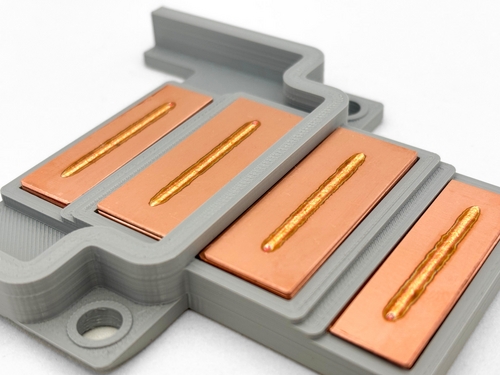
Conclusion
Even if the applications described are merely examples of the diverse opportunities that laser welding offers, they make clear that blue diode lasers are fully suitable for joining power electronics components or electrical contacts in auxiliary motors. Uncomplicated in design, flexible in execution and cost-effective to implement, the welding processes deliver consistently convincing results. Laser welding is therefore a genuine alternative to established joining processes. Diode laser specialist Laserline not only offers its customers individual support on system selection and process setup, but also has application laboratories in which the laser processes can be extensively tested in-house. With more than 25 years of expertise in industrial laser welding, the company has extensive experience in the development of customer-specific solutions - not only for joining power electronics or auxiliary motors, but also for numerous other applications.
Learn more about copper welding.


